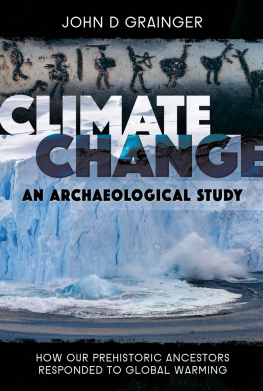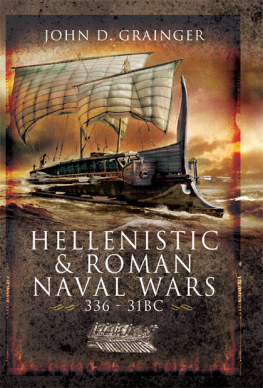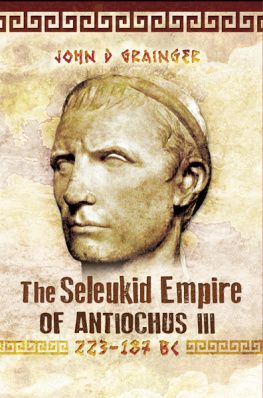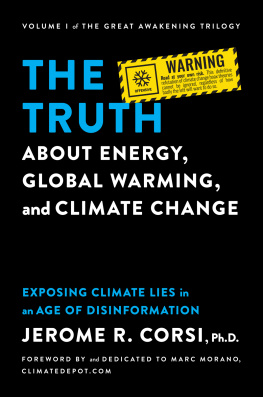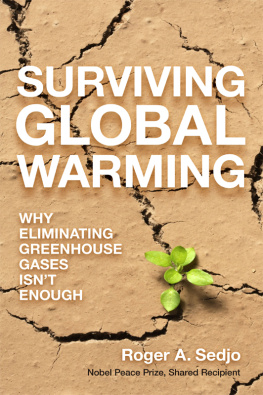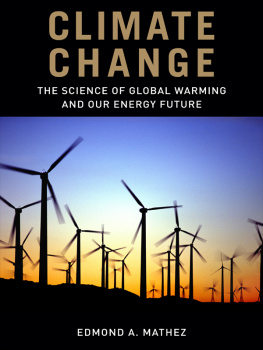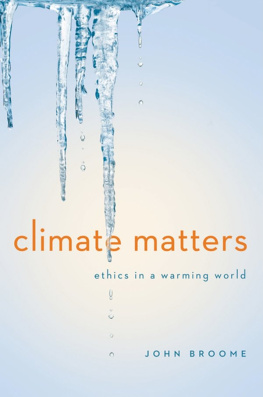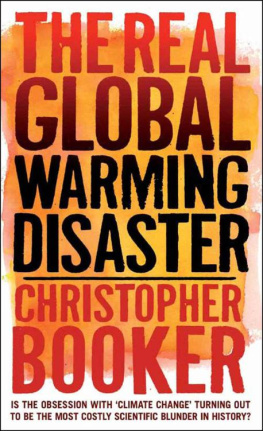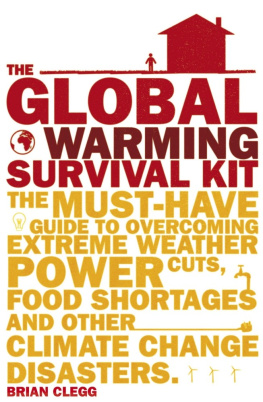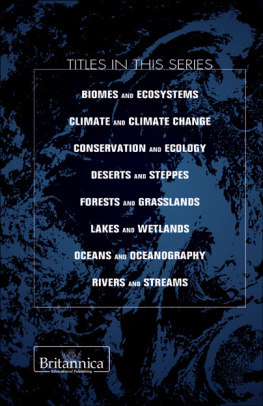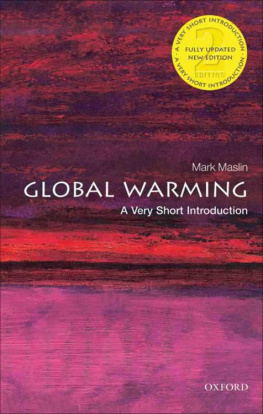John D. Grainger - Climate change : an archaeological study : how our prehistoric ancestors responded to global warming
Here you can read online John D. Grainger - Climate change : an archaeological study : how our prehistoric ancestors responded to global warming full text of the book (entire story) in english for free. Download pdf and epub, get meaning, cover and reviews about this ebook. year: 2020, genre: Art. Description of the work, (preface) as well as reviews are available. Best literature library LitArk.com created for fans of good reading and offers a wide selection of genres:
Romance novel
Science fiction
Adventure
Detective
Science
History
Home and family
Prose
Art
Politics
Computer
Non-fiction
Religion
Business
Children
Humor
Choose a favorite category and find really read worthwhile books. Enjoy immersion in the world of imagination, feel the emotions of the characters or learn something new for yourself, make an fascinating discovery.
- Book:Climate change : an archaeological study : how our prehistoric ancestors responded to global warming
- Author:
- Genre:
- Year:2020
- Rating:3 / 5
- Favourites:Add to favourites
- Your mark:
- 60
- 1
- 2
- 3
- 4
- 5
Climate change : an archaeological study : how our prehistoric ancestors responded to global warming: summary, description and annotation
We offer to read an annotation, description, summary or preface (depends on what the author of the book "Climate change : an archaeological study : how our prehistoric ancestors responded to global warming" wrote himself). If you haven't found the necessary information about the book — write in the comments, we will try to find it.
John D. Grainger: author's other books
Who wrote Climate change : an archaeological study : how our prehistoric ancestors responded to global warming? Find out the surname, the name of the author of the book and a list of all author's works by series.
Climate change : an archaeological study : how our prehistoric ancestors responded to global warming — read online for free the complete book (whole text) full work
Below is the text of the book, divided by pages. System saving the place of the last page read, allows you to conveniently read the book "Climate change : an archaeological study : how our prehistoric ancestors responded to global warming" online for free, without having to search again every time where you left off. Put a bookmark, and you can go to the page where you finished reading at any time.
Font size:
Interval:
Bookmark:

Climate Change: An Archaeological Study
How Our Prehistoric Ancestors Responded to Global Warming
John D Grainger

First published in Great Britain in 2020 by
Pen & Sword History
An imprint of
Pen & Sword Books Ltd
Yorkshire Philadelphia
Copyright John D Grainger 2020
ISBN 978 1 52678 654 8
eISBN 978 1 52678 655 5
Mobi ISBN 978 1 52678 656 2
The right of John D Grainger to be identified as Author of this work has been asserted by him in accordance with the Copyright, Designs and Patents Act 1988.
A CIP catalogue record for this book is available from the British Library.
All rights reserved. No part of this book may be reproduced or transmitted in any form or by any means, electronic or mechanical including photocopying, recording or by any information storage and retrieval system, without permission from the Publisher in writing.
Pen & Sword Books Limited incorporates the imprints of Atlas, Archaeology, Aviation, Discovery, Family History, Fiction, History, Maritime, Military, Military Classics, Politics, Select, Transport, True Crime, Air World, Frontline Publishing, Leo Cooper, Remember When, Seaforth Publishing, The Praetorian Press, Wharncliffe Local History, Wharncliffe Transport, Wharncliffe True Crime and White Owl.
For a complete list of Pen & Sword titles please contact
PEN & SWORD BOOKS LIMITED
47 Church Street, Barnsley, South Yorkshire, S70 2AS, England
E-mail:
Or
PEN AND SWORD BOOKS
1950 Lawrence Rd, Havertown, PA 19083, USA
E-mail:
Website: www.penandswordbooks.com
Stages of the Ice Age
The Spread of Homo sapiens
Sundaland and Sahul
Early Sites in Australia and New Guinea
East New Guinea and Melanesia
GALLERY I: THE EARLIEST AUSTRALIANS
Effects of the Laki Eruption, 1783
Changes in Sea Level
Changes in Climate and Vegetation
Northern Hemisphere Vegetation Zones
Europe in the Ice Age
Caves in use in Ice Age Europe
The shrinking and division of Sahul
North America in the Ice Age
GALLERY II: EUROPE IN THE ICE AGE
Mammoth Hunters Tent
Meiendorf and Stellmoor
Doggerland
Russia and Ukraine under the ice
Colonisation of Norway
Early Norwegian Ships
Arboreal Colonisation of Europe
The Retreat of the Ice
Beringia
Aleut and Inuit
GALLERY III: SCENES OF MESOLITHIC LIFE IN IBERIA
Ice and Water in Glacial North America
The Shifting Lake Agassiz
Lake Missoula
The Ice-free Corridor
Nenana and Denali Sites in Alaska
Early Sites in North America
Early Sites in South America
Early Sites in Alaska and British Columbia
GALLERY IV: EXTINCT ANIMALS OF NORTH AMERICA
Eastern North America under the Ice
Japan becomes an island
Mesolithic Shell Mounds
Early fishing in the Gulf
Alexander and Nearchos in the Desert
The Bass Strait Islands
Danish Mesolithic fishermen
A Danish Mesolithic House
A Canoe Burial
Japanese Pottery Decoration
The Periods of Japanese Prehistory
Japanese Shellmound village
The Foragers of Oronsay
Mesolithic India
Mesolithic Sites in the Gangetic Plain
Two Peruvian Early Sites
GALLERY V: MESOLITHIC LIFE IN INDIA
Changes in the Australian North
Sites in the Kakadu
Climate Changes in the Sahara and East Africa
Saharan Climate Fluctuations
Cattle in the Sahara
GALLERY VI: SAHARAN ROCK DRAWINGS
The Fertile Crescent
Ohalo
The First Agriculturalists
Natufian Houses
Early Agriculture in East Asia
Rice at Diaotonghuan Cave
African Domestication
East New Guinea
Kuk
GALLERY VII: THE INVENTION OF AGRICULTURE
G lobal warming, we are told, is a fact. Evidence is produced almost daily to support this theory, large numbers of scientists are corralled into stating that it is happening, the United Nations has weighed in with conferences and reports that it is happening, large numbers of non-governmental agencies are involved creating plenty of jobs for bureaucrats lobbyists and agitators and non-governmental agencies abound, seeking to exert pressure on governments to do something, and go green. And yet it is actually not much more, so far, than a preliminary theory supplemented by projections of future trends, which vary widely with the hysteria of the projector. For the global temperature is still within the range over which it has oscillated for the last ten millennia. The problem is, of course, that the proof of the theory may well be an uninhabitable earth.
At the same time there are many who have disbelieved the prediction from the first. Some of these people have credible reasons for their scepticism. For example, one of the apparently most telling images which proves that the warming is taking place is the reduction in the ice cover of the Arctic Ocean, which is popularly associated with the predicted rise in the sea level but the Arctic ice is frozen sea water, and its melting will not seriously affect the sea level. At times the enthusiasts for global warming are guilty of allowing such facts to go by without correction, imagining that such falsehoods assist their case. The ice caps and glaciers on land, however, are a different matter, for their melting will certainly cause a rise in the sea level. It would help, in considering the issues, if those who did so took a rather longer view than since records began, which is a disingenuous way of implying a long time. In fact, records of climate rarely cover a period longer than the last two centuries; in climatological and geological terms this is the blink of an eye.
We will have to wait and see what actually happens, or rather our descendants will see, especially if we simply wait. Plenty of efforts are going into plans to restrict the warming, even reverse it, largely based on the theory that it is caused by the emission of carbon dioxide and other greenhouse gases. This assumption may or may not be correct, and the suggested actions may or may not work. Again there are enthusiasts for solutions which if implemented may well be so drastic as to be worse than the problem. It seems unlikely that we know enough about the Earth, its seas, and its air circulation, to risk fiddling with it any more. And yet the theory of global warming would not be the first scientific theory that proved to be mistaken, but which had the desired corrective effect.
It is worth remembering that diseases were regarded as Acts of God for many centuries, and that when malaria became a scourge it was ascribed to something in the air mal-aria = bad air which, in a (temporarily) convincing scientific theory of a miasma, indicated that stinking refuse and rotting waste should be removed so as to remove the miasma exuding from them, and when this was done, they thereupon ceased to produce the bad air. Later came the germ theory of disease, and this debunked the miasma theory. But the dismissed and disproved theory had, all the same, indicated the right preventative action; removing the stinking refuse really did help to remove a major cause of malaria, at least in the temperate regions of the world.
Therefore, even if global warming really is happening, and even if the over-production of carbon dioxide and other greenhouse gases does not prove to have been the cause, reducing or eliminating the production of these chemicals can only be a good thing, and can only be a worthwhile exercise.
Font size:
Interval:
Bookmark:
Similar books «Climate change : an archaeological study : how our prehistoric ancestors responded to global warming»
Look at similar books to Climate change : an archaeological study : how our prehistoric ancestors responded to global warming. We have selected literature similar in name and meaning in the hope of providing readers with more options to find new, interesting, not yet read works.
Discussion, reviews of the book Climate change : an archaeological study : how our prehistoric ancestors responded to global warming and just readers' own opinions. Leave your comments, write what you think about the work, its meaning or the main characters. Specify what exactly you liked and what you didn't like, and why you think so.

